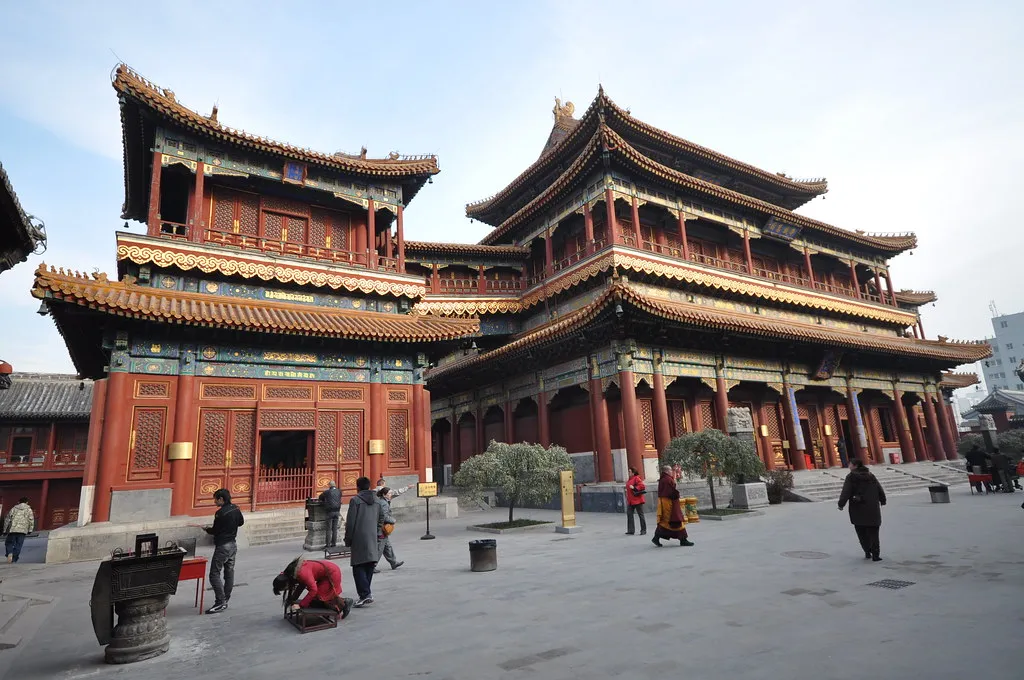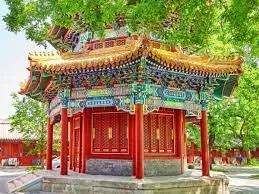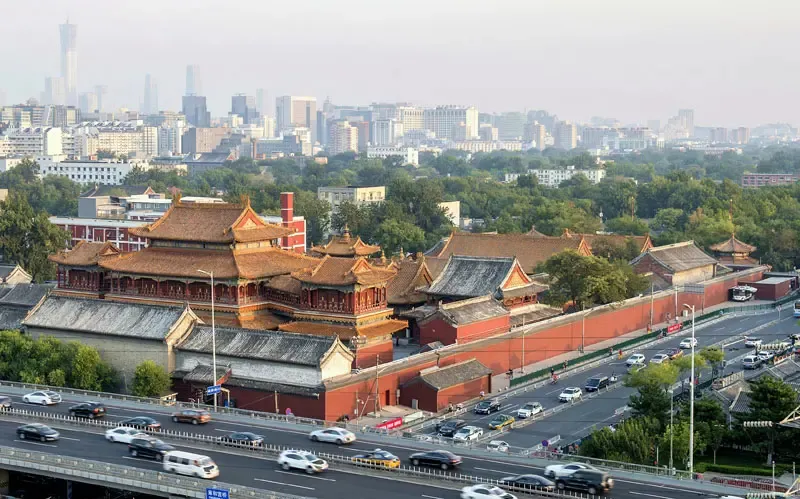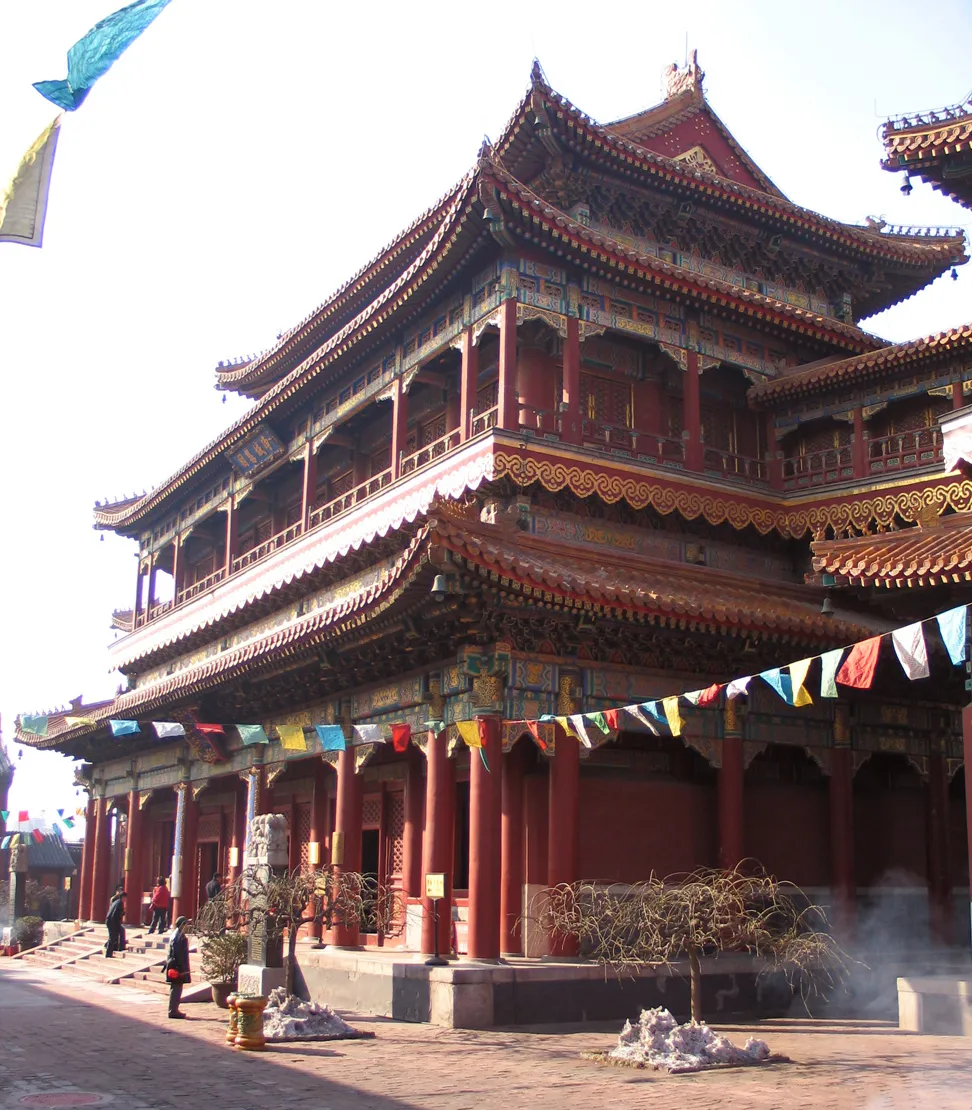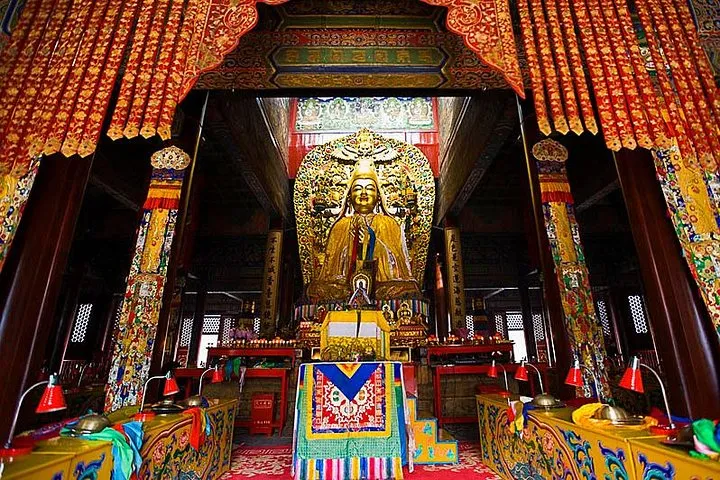
Lama Temple
Delhi
Lama Temple Itinerary
Day 1: Arrival in Beijing Morning:
Arrive at Beijing Capital International Airport or Beijing Railway Station. Check into your accommodation in Beijing. Afternoon: Visit Tiananmen Square, one of the largest public squares in the world. Explore iconic landmarks such as the Monument to the People's Heroes and the Great Hall of the People. Evening: Enjoy dinner at a local restaurant, sampling Beijing cuisine specialties such as Peking duck, dumplings, and noodles. Take a leisurely walk around the Wangfujing shopping district, known for its bustling night markets and street food stalls.
Day 2: Lama Temple and Hutong Tour Morning:
Start your day with a visit to the Lama Temple (Yonghe Temple), one of the largest and most important Tibetan Buddhist monasteries outside of Tibet. Explore its beautiful architecture, intricate artwork, and sacred halls. Afternoon: Take a guided hutong tour, exploring Beijing's historic alleyways and courtyard homes. Visit local homes, traditional shops, and cultural landmarks to learn about Beijing's rich history and heritage. Evening: Enjoy a traditional Beijing-style hotpot dinner at a local restaurant in the hutongs. Experience the communal dining atmosphere and savor a variety of meats, vegetables, and dipping sauces.
Day 3: Explore Beijing Morning:
Visit the Forbidden City, a UNESCO World Heritage Site and the former imperial palace of the Ming and Qing dynasties. Explore its vast courtyards, halls, and pavilions, marveling at the intricate architecture and imperial treasures. Afternoon: Explore the historic neighborhoods of Beijing's old city, including the Drum and Bell Towers, Nanluoguxiang hutong, and Houhai Lake area. Take a leisurely bike ride or boat tour along the Shichahai waterways. Evening: Enjoy dinner at a local restaurant near Houhai Lake, overlooking the scenic waterfront. Relax with a drink at a lakeside bar or teahouse, soaking in the ambiance of Beijing's vibrant nightlife.
Day 4: Departure from Beijing Morning:
Take a final stroll around the Lama Temple, soaking in the serene atmosphere and spiritual energy of the site. Visit the temple's gift shop to purchase souvenirs such as Tibetan Buddhist artifacts, incense, and prayer beads. Afternoon: Transfer to Beijing Capital International Airport or Beijing Railway Station for your departure. Bid farewell to Beijing and the cultural treasures of the Lama Temple as you depart for your next destination.
Our Tour Details
-
Pick-up and DropDelhi
-
Duration3N/4D
-
Starting Price₹/-
Frequently asked Questions:
The Lama Temple, also known as Yonghe Temple, is a Tibetan Buddhist temple in Beijing, China. It is one of the city's most important religious sites and a well-preserved example of Tibetan-style architecture.
The construction of the Lama Temple began in 1694 during the Qing Dynasty. Originally built as a residence for Emperor Yongzheng, it was later converted into a Tibetan Buddhist monastery.
Yes, the Lama Temple is an active monastery and a thriving center for Tibetan Buddhist worship. Monks live and practice there, and it attracts pilgrims and visitors alike.
The main attractions include the Hall of Harmony and Peace, the Hall of Everlasting Protection, the Hall of the Wheel of the Law, the Hall of Boundless Happiness, and the Pavilion of Ten Thousand Happinesses. Each hall contains various Buddha statues and religious artifacts.
The Lama Temple houses a towering 18-meter (59-foot) tall statue of Maitreya Buddha carved from a single sandalwood tree. It is the largest wooden Buddha statue in the world and a focal point for pilgrims.
While the temple primarily serves as a religious site, visitors are welcome to observe traditional Tibetan Buddhist ceremonies and rituals. However, it's important to be respectful and follow any guidelines set by the temple.
Yes, there is usually an entrance fee for visitors. The fee helps support the maintenance and preservation of the historical site.
There is no strict dress code, but visitors are encouraged to dress modestly out of respect for the religious nature of the site. Avoiding revealing clothing is advisable.
Photography is generally allowed in the outer courtyards, but some halls may have restrictions on photography or may require a separate photography ticket.
The Lama Temple is open year-round, but the best time to visit is during the spring and autumn when the weather is mild. Additionally, visiting during traditional Tibetan Buddhist festivals may provide a unique cultural experience.

